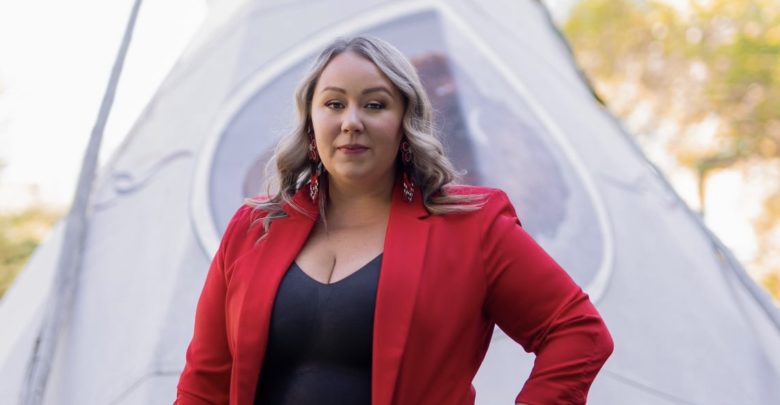Humans of UAlberta: Casey Caines
The Supreme Court clerkship is "a once in a lifetime opportunity to see how everything's working at the highest level of the court," Caines explained.
 Supplied
SuppliedCasey Caines was at a community workshop when she received a call from a number she didn’t recognize.
“I put it back in my pocket,” she explained. “But I looked back and saw Ottawa, so I was like, maybe I should answer it.”
The call was from Justice Michelle O’Bonsawin, the first Indigenous person to serve as a Supreme Court justice in Canada. She called to inform Caines, who graduated from the University of Alberta’s faculty of law in June, that she was selected to serve as her clerk in the Supreme Court of Canada.
“I immediately burst into tears,” Caines said.
The clerkship begins in Ottawa in August 2024, and runs for one year. Caines will be apprenticing under O’Bonsawin, which includes conducting legal research, reviewing information for judgements, and legal writing.
“Essentially, you are everything the judge needs you to be for that year,” Caines explained. “It’s a once in a lifetime opportunity to see how everything’s working at the highest level of the court.”
Caines explained that she enrolled in law school with the goal of working in an advocacy role. Thus, the clerkship will help her tackle inequality from a more holistic perspective.
“I want to reduce inequalities. In order to do that, you have to know how they are being created and how they’ve already been addressed,” she said. “Being able to learn from not only the justices, but also my fellow colleagues who will be at the court, is just a really great opportunity.”
“Every part of being able to advocate for [my] child intersected with law,” Caines said
Caines decided to enroll in law school when her daughter was diagnosed with autism. As she worked to advocate for her child, Caines found herself in a position where legal knowledge was important.
“Every part of being able to advocate for [my] child intersected with law,” Caines explained, “whether it was legislation, advocacy, or being able to tell people about what the law is.”
When the COVID-19 pandemic moved classes online, Caines attended law school from home with a new baby and her six-year-old daughter by her side.
“I went in with a purpose,” Caines explained. “I structured my entire education around getting the tools that I needed to help my children.”
Still, attending law school with two young children was not easy, Caines said. But, she found support from the community at the faculty of law’s Wahkohtowin Law and Governance Lodge.
The lodge was created in response to the Truth and Reconciliation Commission (TRC)’s Call To Action 50. It calls for “the establishment of Indigenous law institutes for the development, use, and understanding of Indigenous laws and access to justice in accordance with the unique cultures of Aboriginal peoples in Canada.”
“I would say from September to December, I cried almost every day of law school,” Caines said. But then she met Hadley Friedland, the lodge’s academic director, and Koren Lightning-Earle, the lodge’s legal director. They helped Caines and her children as she attended classes.
“They watched my children on Wednesday nights so I could finish law school,” Caines explained. “My children call them auntie now.”
Caines explained that the staff at Wahkohtowin Lodge are invited in by Indigenous communities to do legislative drafting work, with the hopes of “bring[ing] forward laws that are rooted in their own ways of knowing.” Wahkotowin Lodge also works to provide free and accessible resources for the public.
Caines said that the staff at The Wahkohtowin Law and Governance Lodge have become more like family.
“But beyond that,” she said, “they’re just brilliant academic scholars who are really innovative, and bringing forth Indigenous law in these really, really creative and magical ways.”




